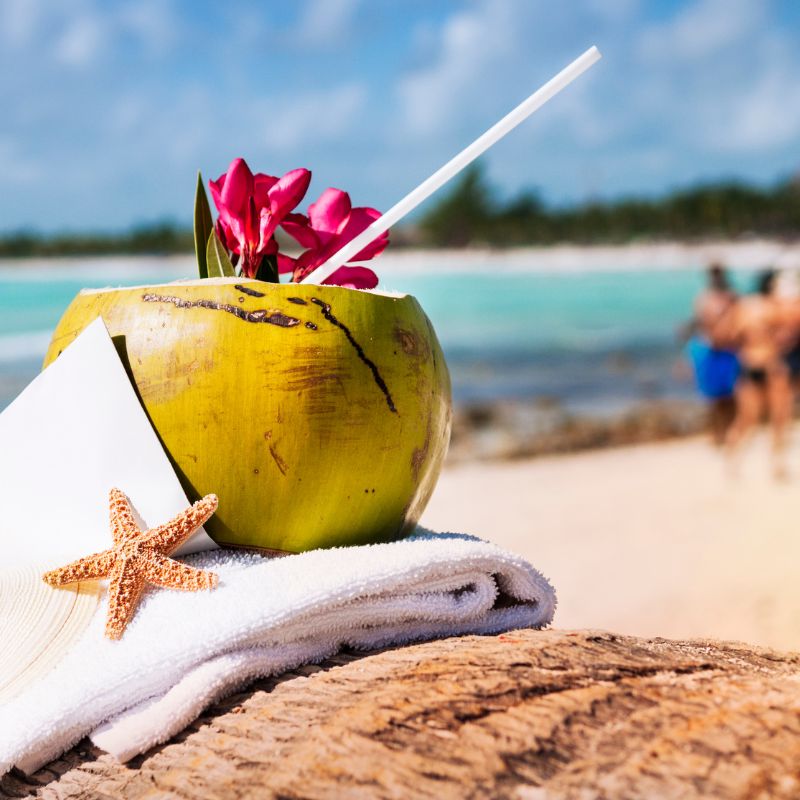
The Caribbean
Taste Of The Caribbean
Taste Of The Caribbean – The Caribbean, often spelled as “Caribbean,” is a region located in the Caribbean Sea, which is part of the larger Atlantic Ocean. It consists of numerous islands, islets, and coastlines in and around the Caribbean Sea. Its stunning natural beauty, diverse cultures, and warm tropical climate are what make this region known.
Key characteristics of the Caribbean include:
Geography:
The Caribbean encompasses more than 7,000 islands and islets, although only a relatively small number of them are inhabited. These islands are divided into several subregions, including the Greater Antilles, Lesser Antilles, and the Lucayan Archipelago.
Climate – Taste Of The Caribbean:
The Caribbean has a tropical climate with consistent warmth throughout the year. It is prone to hurricanes during the hurricane season, which typically runs from June to November.
Culture:
Its rich and diverse cultural heritage is what the Caribbean is known for. This heritage has been shaped by indigenous peoples, European colonization (primarily Spanish, British, French, and Dutch), African slave heritage, and immigration from other parts of the world. This cultural blend is evident in music, dance, cuisine, and traditions.

Languages – Taste Of The Caribbean:
While many Caribbean nations and territories commonly speak English. Numerous other languages, including Spanish, French, Dutch, and various Creole languages, are also spoken.
Tourism:
The Caribbean is a popular tourist destination, attracting millions of visitors each year. The region’s beautiful beaches, clear waters, water sports, historical sites, and vibrant culture draw tourists.
Economy:
The economy of Caribbean countries varies widely. Some nations rely heavily on tourism, while others have diverse economies, including agriculture, manufacturing, and offshore financial services.
Natural Beauty – Taste Of The Caribbean:
Its picturesque landscapes, including lush rainforests, coral reefs, and volcanic mountains. Are what the Caribbean is known for. The region is famous for activities such as scuba diving and snorkeling, allowing visitors to explore its diverse marine life.
Music and Dance:
The Caribbean has had a significant influence on global music, with genres like reggae (from Jamaica), calypso (from Trinidad and Tobago), and salsa (from Cuba and Puerto Rico) gaining international recognition. Dance forms like the salsa and the mambo also originated in the Caribbean.
Some well-known Caribbean countries and territories include Cuba, Jamaica, the Dominican Republic, Puerto Rico, Trinidad and Tobago, the Bahamas, and Barbados, among others.
Overall, the Caribbean is a vibrant and culturally rich region with a unique blend of traditions, history, and natural beauty that make it a fascinating destination for travelers and a culturally diverse place to live.
The delightful fusion of flavors in the Caribbean is influenced by the region’s diverse cultural heritage. Also abundant natural resources. Caribbean cuisine is known for incorporating tropical fruits, spices, seafood, and a variety of cooking techniques. Here are some key elements of the taste of the Caribbean:
Fresh Tropical Fruits – Taste Of The Caribbean:
The Caribbean is abundant in tropical fruits like mangoes, pineapples, papayas, guavas, and coconuts. They often incorporate these fruits into dishes, juices, and desserts, adding a burst of sweetness and freshness.
Fresh tropical fruits are a hallmark of Caribbean cuisine, contributing to its vibrant and exotic flavors. People widely enjoy these fruits both on their own and as ingredients in various dishes, drinks, and desserts. Here are some of the most commonly used tropical fruits in Caribbean cuisine. Along with more details about each:
Mango:
Mangoes are one of the most beloved tropical fruits in the Caribbean. Various varieties of mangoes are enjoyed when ripe, either sliced or in fruit salads. Mangoes are also utilized in chutneys, salsas, and desserts. Such as mango sorbet and mango lassi.
Pineapple:
Pineapples are renowned for their sweet and tangy flavor. They are frequently served fresh, either sliced or as part of a fruit platter. Pineapple is also a common ingredient in fruit punches, grilled dishes, and desserts like pineapple upside-down cake.
Papaya – Taste Of The Caribbean:
Papaya, also known as pawpaw, is a tropical fruit with orange flesh and a sweet, tropical taste. Also papaya is often consumed fresh, either on its own or in fruit salads. It is also a key ingredient in smoothies, salsas. Also is known for its digestive aid properties due to its enzyme, papain.
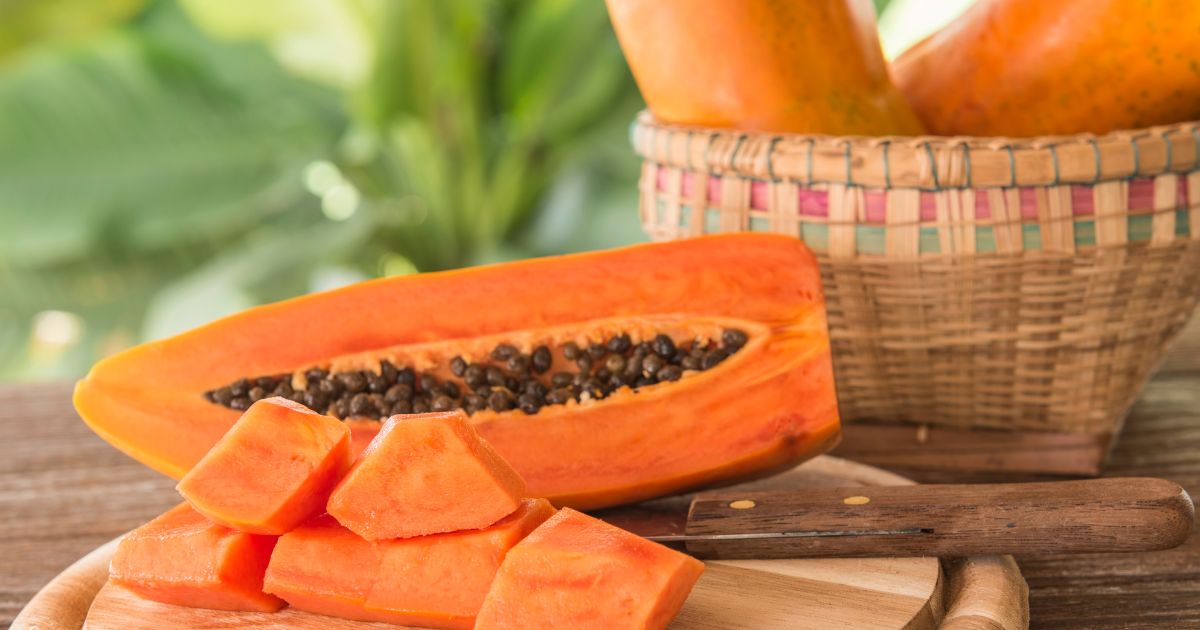
Guava:
Guavas have a unique sweet and slightly tart flavor. Guavas can be enjoyed fresh, with or without the skin. Also are frequently processed into guava paste, jellies, and juices. Guava is a common ingredient in Caribbean pastries and desserts.
Coconut – Taste Of The Caribbean:
Coconuts are versatile in Caribbean cuisine. The coconut water is a refreshing beverage enjoyed straight from the fruit. The flesh of coconuts can be utilized in various forms, such as shredded coconut in desserts. Also coconut milk in savory dishes and cocktails like piña coladas.
Read also The Weddell Sea Antarctic Peninsula
Banana:
Bananas, while not unique to the Caribbean, are a staple fruit. Bananas are enjoyed as a snack, added to fruit salads. Also frequently used in baking, particularly for making banana bread.
Soursop:
Soursop, also known as graviola, has a distinctive flavor that is a mix of strawberry, pineapple, and citrus. Also soursop is frequently used to make soursop juice, known for its sweet and refreshing taste. The pulp of soursop is also a common ingredient in desserts, ice creams, and smoothies.
Starfruit:
Starfruit, with its unique star-shaped cross-section, has a sweet and tangy flavor. It’s commonly eaten fresh, sliced into star-shaped pieces. Starfruit can also be used as a garnish or in salads.
Passion Fruit – Taste Of The Caribbean:
Passion fruit, with its sweet and tart flavor, is commonly used to make passion fruit juice. Which is enjoyed either on its own or as a cocktail ingredient. So the seeds and pulp are frequently scooped out and added to desserts, yogurt, or fruit salads.
Dragon Fruit:
While not native to the Caribbean, dragon fruit is becoming increasingly popular in the region. Its sweet, mildly nutty flavor and vibrant colors make it a visually appealing addition to fruit salads and smoothie bowls.
These tropical fruits not only provide delicious and refreshing flavors but also contribute to the vibrant and diverse culinary landscape of the Caribbean. Caribbean cuisine often integrates them into a wide range of dishes, beverages, and desserts, making it a delightful exploration of tropical tastes and aromas.
Spices and Seasonings – Taste Of The Caribbean:
Caribbean cuisine is famous for its bold and flavorful seasonings. Common spices and seasonings include allspice, thyme, Scotch bonnet peppers, ginger, garlic, and various blends of spices like jerk seasoning.
Spices and seasonings are an essential part of Caribbean cuisine, providing the bold and distinctive flavors that make the region’s dishes so unique and flavorful. The use of spices and seasonings in Caribbean cooking is a result of the diverse cultural influences and historical ties to various parts of the world. Here are some key spices and seasonings commonly used in Caribbean cuisine, along with more details about each:
Allspice (Pimento):
Allspice, derived from the dried berries of the Pimenta dioica tree, is a spice native to the Caribbean. It combines elements of cloves, cinnamon, and nutmeg in its complex flavor profile. Allspice plays a crucial role in jerk seasoning and finds usage in various savory dishes, stews, and pickling.
Scotch Bonnet Pepper – Taste Of The Caribbean:
These small, fiery peppers are a staple in Caribbean cooking and provide the heat and distinctive flavor to many dishes. Caribbean cooks use Scotch bonnet peppers to make hot sauces and marinades, and they often add them whole or minced to soups, stews, and jerk recipes.
Thyme:
Caribbean cuisine commonly uses fresh thyme to add an earthy, aromatic flavor to dishes. Chefs incorporate it into marinades, sauces, and rice and bean dishes.
Ginger – Taste Of The Caribbean:
Caribbean chefs use fresh ginger to add a zesty, spicy kick to many dishes. They often grate or mince it and incorporate it into marinades, stir-fries, and beverages like ginger beer.
Garlic:
Garlic is a fundamental ingredient in Caribbean cooking. Caribbean chefs use it in various forms, including minced, crushed, or roasted, to season meats, seafood, stews, and rice dishes.
Nutmeg – Taste Of The Caribbean:
Chefs often grate fresh nutmeg and use it to flavor dishes like soups, sauces, and desserts in Caribbean cuisine. They also use it as an essential component of some spice blends and sometimes add it to cocktails.
Cinnamon:
Caribbean chefs use ground cinnamon or cinnamon sticks to add warm and sweet undertones to desserts like rice pudding, bread pudding, and spiced cakes.
Clove – Taste Of The Caribbean:
Caribbean chefs use cloves whole or ground to provide a strong and aromatic flavor. They frequently incorporate them into ham glazes, pickles, and spice blends.
Cumin:
Caribbean chefs use cumin seeds or ground cumin in Caribbean dishes, particularly in Trinidadian and Guyanese cuisine. They add a warm, earthy, and slightly nutty flavor to dishes like curries and rice.
Coriander:
Chefs use coriander seeds or ground coriander in spice blends and marinades. They contribute a citrusy and slightly nutty flavor.
Turmeric:
Caribbean cooks use turmeric for its vibrant yellow color and earthy flavor. They often add it to rice dishes, curries, and marinades.
Annatto (Achiote):
Caribbean chefs use annatto seeds to create a rich, reddish-orange color in dishes. They often infuse them in oil and use this infusion for rice, stews, and meat marinades.
Paprika – Taste Of The Caribbean:
Caribbean chefs use both sweet and hot varieties of paprika to add color and flavor to dishes. They often sprinkle it on meats, seafood, and stews.
Basil:
Caribbean cooks use fresh basil leaves in their cuisine to add a fragrant, herbaceous note to sauces, soups, and seafood dishes.
Parsley:
Fresh parsley is a common garnish and flavor enhancer in Caribbean cuisine, used to add freshness to many dishes.
The combination of these spices and seasonings, along with the use of fresh herbs and the careful blending of flavors, is what makes Caribbean cuisine so flavorful and exciting. Different islands and regions within the Caribbean may have their own unique spice blends and techniques, adding to the rich tapestry of Caribbean cooking.
Seafood – Taste Of The Caribbean:
Given the region’s proximity to the sea, seafood plays a significant role in Caribbean cuisine. Popular seafood dishes include grilled or fried fish, conch fritters, shrimp, and lobster.
Seafood is a significant component of Caribbean cuisine, given the region’s proximity to the sea and abundant marine resources. Caribbean countries have a strong tradition of preparing and enjoying various types of seafood in their culinary creations. Here are some key details about the seafood that commonly features in Caribbean cuisine:
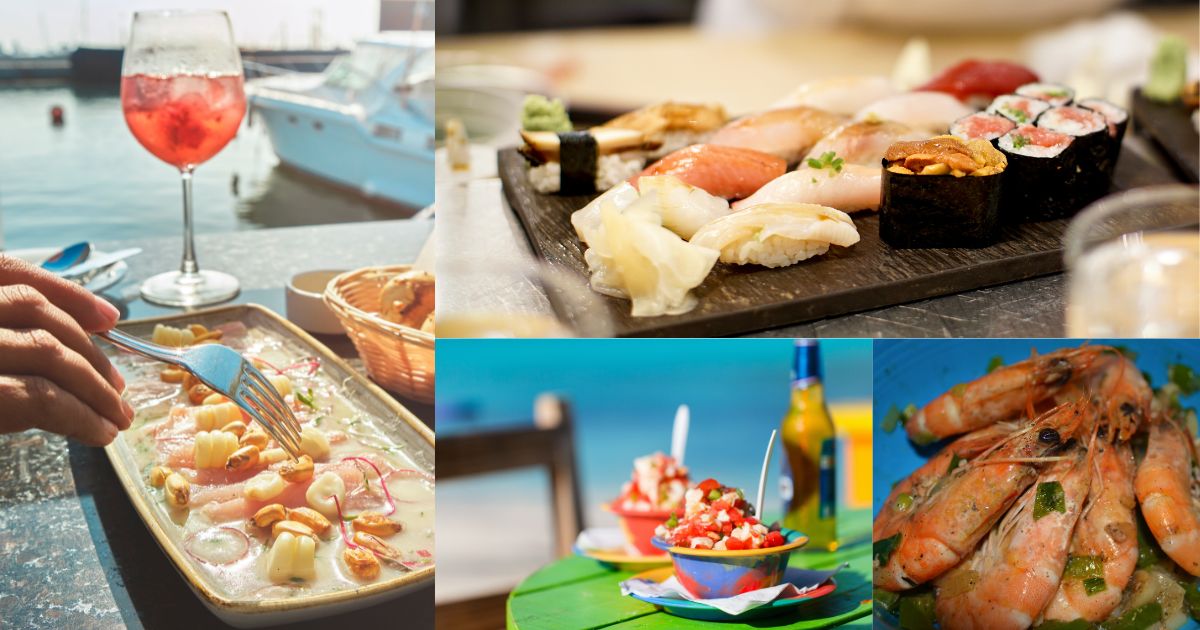
Fish:
Caribbean residents widely consume various types of fish. Some popular choices include snapper, grouper, mahi-mahi, redfish, and kingfish. They often grill, fry, steam, or bake these fish with a variety of flavorful seasonings and sauces.
Lobster:
Many Caribbean nations consider lobster a delicacy. Chefs often prepare it by grilling or broiling, and they can also use it in dishes like lobster bisque or serve it with butter and garlic.
Read also Niihau Shells – Best And Unique Jewelry
Shrimp – Taste Of The Caribbean:
Caribbean cuisine utilizes shrimp as a versatile seafood ingredient. Chefs prepare it in various ways, including grilling, frying, sautéing, and using it in stir-fries and rice dishes. They often season shrimp with local spices and herbs.
Conch:
Conch, a type of marine snail, finds use in various Caribbean dishes. Chefs typically prepare it in salads (conch salad), fritters (conch fritters), or as a stew (conch stew or chowder). Conch has a chewy texture and a mild, slightly sweet flavor.
Crab:
People in the Caribbean commonly catch and enjoy blue crab and other types of crab. They often prepare them in dishes like crab cakes, crab soups, or simply boil them and serve them with a dipping sauce.
Escovitch Fish – Taste Of The Caribbean:
Jamaicans popularly prepare this dish by topping fried fish (usually snapper) with a tangy and spicy pickled vegetable sauce. It’s known for its vibrant and zesty flavors.
Saltfish:
Caribbean cuisine commonly rehydrates and uses saltfish (salted cod) in various dishes, including ackee and saltfish (the national dish of Jamaica) and saltfish and bake (a popular Trinidadian dish).
Ceviche:
In the Caribbean, they commonly prepare ceviche-style dishes by marinating fresh fish or conch in citrus juices (usually lime or lemon) along with herbs, onions, and sometimes Scotch bonnet peppers for a refreshing and tangy appetizer.
Seafood Curries – Taste Of The Caribbean:
Many Caribbean nations have their versions of seafood curries, which may include shrimp, fish, or conch. These dishes feature a rich and flavorful curry sauce typically served with rice or bread.
Seafood Soups and Stews:
Various seafood soups and stews are popular in the Caribbean, often made with a combination of fish, shrimp, crab, and other seafood ingredients. Ingredients like coconut milk, okra, and various spices add depth to these dishes.
Grilled or Roasted Whole Fish – Taste Of The Caribbean:
Grilling or roasting whole fish, often marinated in a mixture of herbs, spices, and citrus, is a common method of preparation in the Caribbean. It allows for a crispy skin and tender, flavorful flesh.
Seafood Boils:
Seafood boils, similar to those found in Cajun cuisine, are popular in some Caribbean regions. These boils typically include shrimp, crab, potatoes, corn, and various seasonings.
The variety of seafood available in the Caribbean and the diverse culinary traditions of the region contribute to a wide range of seafood dishes that are both delicious and culturally significant. Whether it’s grilling a simple fish with a side of plantains or creating a complex seafood stew bursting with Caribbean flavors, seafood plays a vital role in the region’s gastronomy.
Rice and Beans – Taste Of The Caribbean:
A staple in many Caribbean dishes is rice and beans. Throughout the region, you can find variations of this combination, such as Jamaican rice and peas or Puerto Rican arroz con gandules.
Rice and beans, often referred to as “rice and peas” in some Caribbean countries, are a staple and fundamental part of Caribbean cuisine. This dish varies from island to island, and even from household to household, but it generally consists of rice and some type of legume, most commonly kidney beans or black-eyed peas. Here are more details about rice and beans in Caribbean cuisine:
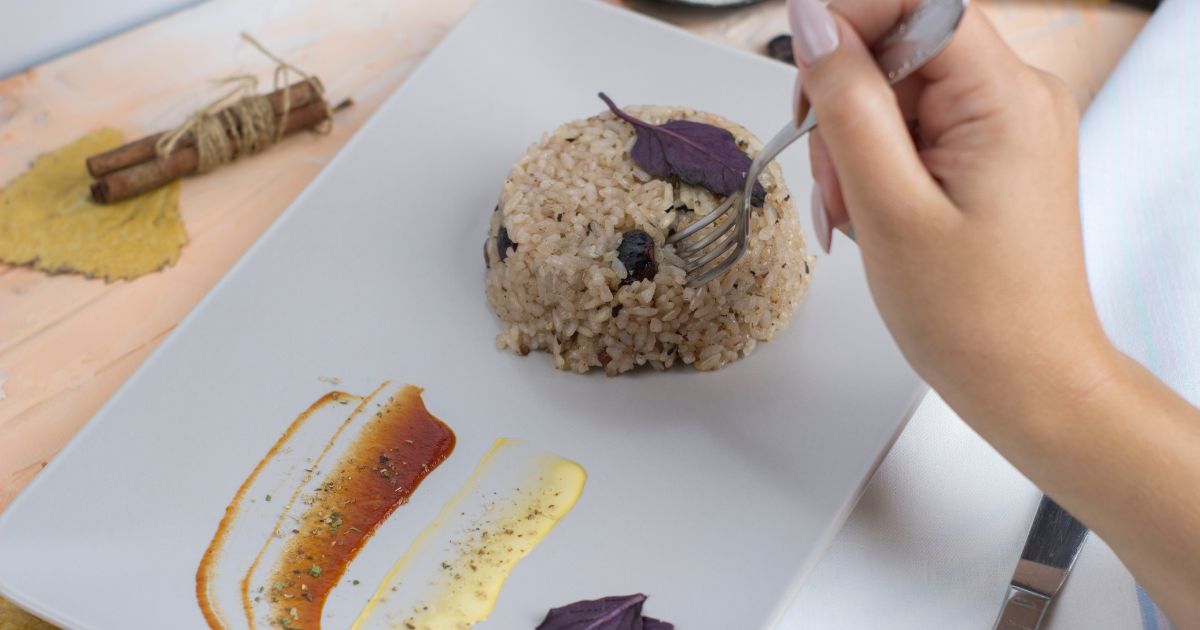
Base Ingredients:
The basic ingredients for rice and beans are white rice and legumes, typically kidney beans or black-eyed peas. Caribbean cooks often soak and cook these legumes separately before combining them with the rice.
Coconut Milk – Taste Of The Caribbean:
One of the signature elements of Caribbean rice and beans is the use of coconut milk. It adds creaminess and a delightful tropical flavor to the dish. When cooking the rice and beans, Caribbean chefs often use coconut milk instead of or in addition to water.
Seasonings:
Caribbean chefs season rice and beans with a variety of ingredients to give them their distinct flavor. Common seasonings include garlic, thyme, scallions (green onions), Scotch bonnet peppers (for heat), and sometimes ginger or allspice.
Sofrito:
Caribbean chefs use a sofrito as a flavor base in many dishes, including rice and beans. It typically consists of sautéed onions, garlic, bell peppers, and sometimes tomatoes. The sofrito adds depth and richness to the dish.
Cooking Techniques:
You can prepare rice and beans in several ways. One common method is the “one-pot” approach, where the rice, beans, seasonings, and coconut milk are all cooked together in the same pot. Another method involves cooking the rice separately and then mixing it with cooked beans and the seasoned sofrito.
Variations – Taste Of The Caribbean:
While rice and beans are a constant in Caribbean cuisine, there are regional and individual variations. For example, in Jamaica, they often call the dish “rice and peas,” and they make it with kidney beans and coconut milk. In the Dominican Republic, they refer to it as “moros y cristianos,” and it may feature black beans and white rice cooked together with spices. Other variations might use pigeon peas or other legumes.
Serving:
Caribbean cuisine typically serves rice and beans as a side dish to accompany various main courses. They pair well with grilled or stewed meats, seafood, and vegetable dishes. In some cases, they may serve them with a protein cooked directly in the dish, such as chicken or shrimp.
Rice and Beans with a Twist – Taste Of The Caribbean:
Some Caribbean chefs and home cooks get creative with their rice and beans recipes. They might add ingredients like sweet potatoes, plantains, or coconut flakes to enhance flavor and texture.
Vegetarian and Vegan-Friendly:
Rice and beans are a popular choice for vegetarians and vegans in the Caribbean because they are hearty, nutritious, and provide a complete source of protein when combined.
Rice and beans are not only a source of sustenance but also a symbol of cultural identity in the Caribbean. This simple yet flavorful dish reflects the influence of African, Indigenous, and European culinary traditions, creating a beloved and comforting staple that the region adores.
Plantains – Taste Of The Caribbean:
Plantains, which are similar to bananas but starchier, are a common side dish in Caribbean cuisine. You can fry them, boil them, mash them (like mofongo), or incorporate them into various recipes.
Plantains are a versatile and beloved ingredient in Caribbean cuisine, as well as in many other parts of the world with tropical climates. They are a type of starchy, green banana and find use in a variety of dishes, both savory and sweet. Here are more details about plantains in Caribbean cuisine:
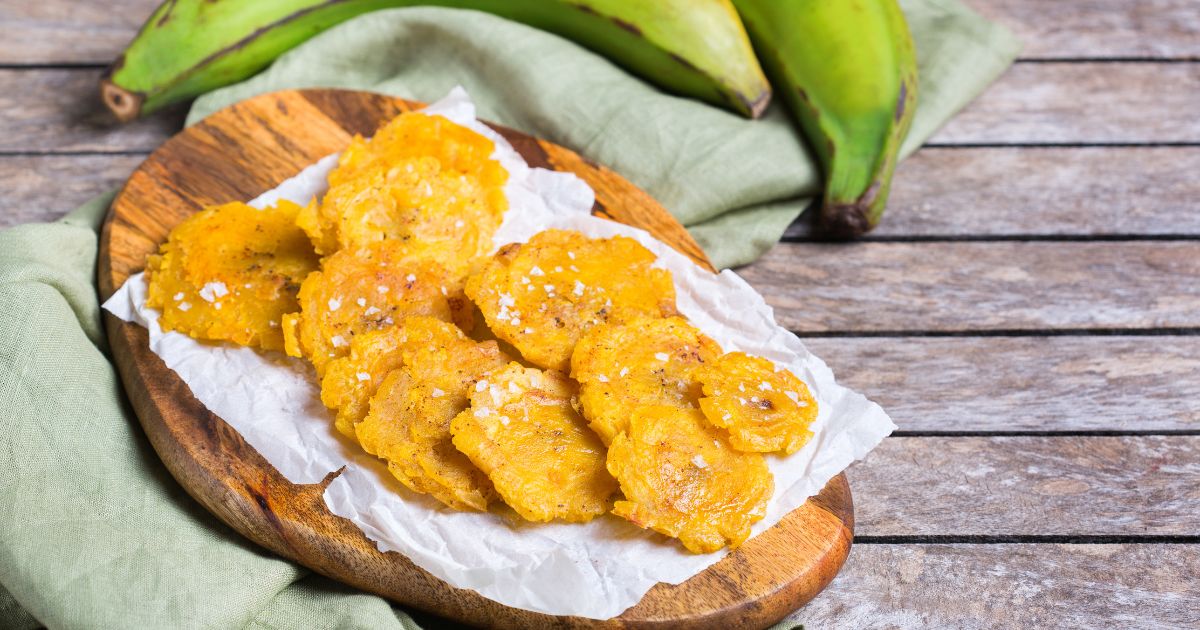
Varieties:
Plantains come in different stages of ripeness, and chefs use each stage for different culinary purposes. The main stages are green, yellow, and black.
- Green Plantains: Green, unripe plantains are starchy and have a firm texture. Chefs commonly use them in savory dishes, and they are the primary stage for making dishes like tostones (fried plantain slices), mofongo (mashed fried plantains), and plantain chips (similar to potato chips).
- Yellow Plantains: As plantains ripen, they turn yellow with black spots. At this stage, they are sweeter and less starchy, making them suitable for both savory and sweet dishes. Yellow plantains can undergo frying, baking, or boiling. Chefs often use them in dishes like plantain lasagna, pastelon (a plantain-based lasagna), and maduros (sweet fried plantains).
- Black plantains: When overripe, are extremely sweet and chefs often use them in desserts like plantain cake or mash them to use as a natural sweetener in various recipes.
Preparation:
Preparing plantains for cooking involves peeling them and cutting them into the desired shape, which can be slices, chunks, or mashed. The preparation method depends on the recipe and the stage of ripeness.
Frying:
Frying is a popular method for cooking plantains. Chefs slice or cut green plantains into chunks and fry them twice to achieve a crispy texture. You can slice yellow plantains and fry them once until they develop a golden-brown color.
Read also Where are the Maldives – All you need to know
Boiling – Taste Of The Caribbean:
You can peel green plantains and boil them until tender, similar to boiling potatoes. You can mash and season boiled plantains to make mofongo or serve them as a side dish.
Baking:
Chefs can also bake plantains, often stuffing them with meat, cheese, or vegetables, creating a hearty and flavorful dish.
Sweet Treats:
In sweet recipes like plantain bread, plantain pudding, and plantain tarts, chefs use ripe (yellow or black) plantains. Their natural sweetness makes them a great ingredient for desserts.
Savory Dishes- Taste Of The Caribbean:
Chefs use plantains in various savory dishes, incorporating them either as a side or a main course. You can find them in stews, soups, and rice dishes. They are also a common accompaniment to grilled meats and seafood.
Plantain Chips:
Chefs thinly slice plantains, fry them until crispy, and season them to create plantain chips. These chips enjoy popularity as a Caribbean snack and frequently grace tables as appetizers or side dishes.
Tostones:
Tostones originate as a classic Caribbean snack crafted from green plantains. You slice them into rounds, fry, flatten, and fry them once more until achieving a crispy texture. Typically, people serve tostones with a dipping sauce.
Nutrition:
Plantains are a good source of complex carbohydrates, dietary fiber, and essential vitamins and minerals like vitamin C, vitamin A, and potassium. They are a filling and nutritious addition to meals.
Plantains are not only a staple in Caribbean cuisine but also an integral part of the culture and heritage of the region. Their versatility, adaptability to various cooking methods, and unique flavor profiles make them a cherished ingredient that adds depth and character to a wide range of dishes. Whether savory or sweet, plantains are a delicious and essential component of Caribbean culinary traditions.
Curries and Stews – Taste Of The Caribbean:
Caribbean countries like Trinidad and Tobago showcase their culinary expertise through flavorful curries, frequently prepared with goat, chicken, or vegetables. Additionally, hearty stews such as oxtail and pepperpot hold a special place in their cuisine, delighting the taste buds of many.
Curries and stews are integral components of Caribbean cuisine, contributing rich, hearty, and flavorful dishes that reflect the diverse cultural influences and ingredients of the region. These dishes serve as beloved comfort food and stand as a testament to the rich culinary heritage of the Caribbean. Here are more details about curries and stews in Caribbean cuisine:
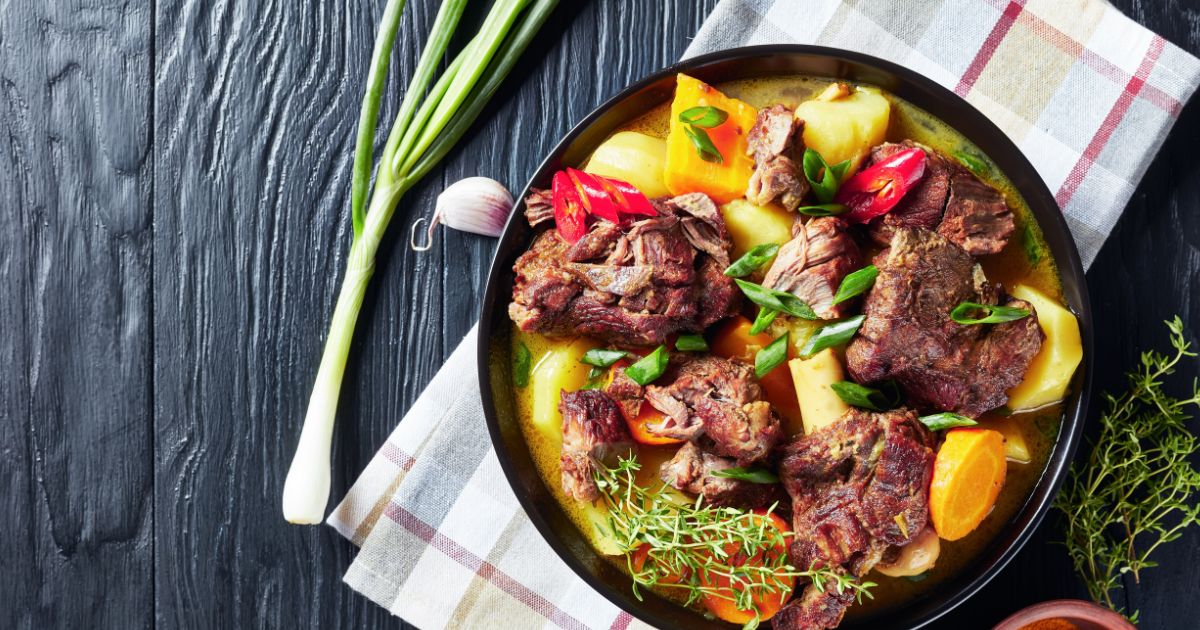
Ingredients:
Caribbean curries and stews feature a variety of proteins, including chicken, goat, beef, seafood (like shrimp and fish), and vegetables. Many dishes also include a combination of vegetables, legumes, and spices to create complex and satisfying flavors.
Curry Powders and Blends:
Caribbean curry dishes earn their reputation for their robust and aromatic spice blends. While the exact blend can vary from one region or island to another, common spices found in Caribbean curry blends include turmeric, coriander, cumin, fenugreek, allspice, and various types of chili peppers. These spices give Caribbean curries their distinctive flavor and color.
Marinades – Taste Of The Caribbean:
In Caribbean cuisine, people frequently marinate meats and seafood in a mixture of seasonings and spices before cooking them. These marinades infuse the ingredients with flavor and help tenderize tougher cuts of meat. Marinades can include ingredients like garlic, ginger, Scotch bonnet peppers, thyme, and vinegar or citrus juices.
Meat Selection:
Goat meat is a popular choice for Caribbean curries, particularly in Jamaica and Trinidad and Tobago. Its distinct flavor and tenderness when slow-cooked make it well-suited for curry dishes. Various curries in the Caribbean cuisine widely feature chicken and beef as well.
Vegetable and Legume Additions:
Caribbean curry dishes commonly include vegetables like potatoes, carrots, okra, eggplant, and pumpkin, contributing a range of textures and flavors. Occasionally, they incorporate legumes such as lentils and chickpeas to create heartier, vegetarian-friendly options.
Coconut Milk – Taste Of The Caribbean:
In Caribbean curry recipes, chefs often use coconut milk to infuse creaminess and introduce a subtle hint of sweetness. It balances the spices and provides a comforting, tropical element to the dish.
Rice and Roti:
In the Caribbean, people typically serve curries with white rice, rice and peas (rice cooked with kidney beans and coconut milk), or roti (flatbread). The starch helps to soak up the flavorful sauce.
Variations:
Caribbean curry dishes vary widely from island to island and even within regions of the same island. For instance, Trinidad and Tobago are renowned for their dish “curry duck,” while Jamaica boasts fame for “curry goat.” Other islands may have their own unique curry preparations with distinct ingredients and flavors.
Stews:
Stews are another popular type of dish in Caribbean cuisine. These hearty and comforting one-pot meals often include meats or seafood, vegetables, and a thick, flavorful sauce. Brown stews, oxtail stew, and fish stew are some examples of Caribbean stew dishes.
Serving and Accompaniments:
Caribbean curries and stews usually accompany rice, roti, or bread. These dishes often receive a garnish of fresh herbs like cilantro or parsley and come with chutneys, pickles, or hot sauces to enhance their flavor and provide a spicy kick.
Caribbean curries and stews represent the fusion of African, Indigenous, European, and Asian culinary traditions, resulting in dishes that are both satisfying and deeply flavorful. These dishes stand as a testament to the diverse cultural heritage of the region and remain cherished and celebrated in Caribbean communities worldwide.
Street Food – Taste Of The Caribbean:
Street food vendors in the Caribbean offer a wide range of tasty snacks and quick meals. Examples include doubles (Trinidadian fried bread with curried chickpeas), roti (flatbread filled with curry), and empanadas.
Street food is an integral part of Caribbean culinary culture, offering a diverse array of flavorful, affordable, and convenient options for locals and visitors alike. Caribbean street food reflects the region’s vibrant mix of cultures and traditions. Here are more details about Caribbean street food:

Variety:
Caribbean street food encompasses a wide variety of dishes and snacks, ranging from savory to sweet. These offerings can vary from one island to another and may also have regional specialties within each island.
Accessibility:
Street food is often readily available in busy markets, street corners, beachside stalls, and at festivals and celebrations. So it provides a convenient and accessible way to experience the local cuisine.
Flavorful Snacks:
Some popular savory Caribbean street food items include:
- Doubles (Trinidad and Tobago): A beloved Trinidadian snack consisting of fried flatbread (bara) filled with curried chickpeas (channa) and topped with various chutneys and sauces.
- Patty (Jamaica): A pastry filled with seasoned meat, typically beef or chicken, and sometimes vegetables. Patties are famous for their golden, flaky crust and spicy filling.
- Accra (Barbados): Deep-fried balls made from a batter of grated cassava, herbs, and spices. They are frequently accompanied by hot pepper sauce.
- Saltfish Fritters (Antigua and Barbuda): Deep-fried balls or patties made from salted codfish, flour, and various seasonings.
- Shark and Bake (Trinidad and Tobago): A popular beachside snack featuring fried shark served in a fried bread called “bake” and garnished with various toppings and sauces.
Beverages:
In addition to snacks and small bites, Caribbean street vendors often offer a range of refreshing beverages. So these can include freshly squeezed fruit juices, coconut water straight from the coconut, and specialty drinks like sorrel (hibiscus flower tea) and mauby (a bitter-sweet bark-based drink).
Sweets and Desserts – Taste Of The Caribbean:
Caribbean street food also includes a variety of sweet treats:
- Coconut Candy (Various Islands): Sweetened coconut flakes or shreds often flavored with spices like nutmeg and cinnamon.
- Tamarind Balls (Various Islands): A sweet and tangy treat made from tamarind pulp, sugar, and sometimes spices.
- Sugar Cakes (Caribbean-wide): These are small, sweet confections made from ingredients like grated coconut, sugar, and sometimes ginger.
- Roti (Various Islands): While roti is a larger dish, vendors often sell it as a portable street food option. Sweet roti may contain ingredients such as condensed milk, sugar, and spices.
Spices and Flavors:
Caribbean street food earns its reputation for its bold and vibrant flavors. Vendors use a variety of spices and seasonings, including allspice, Scotch bonnet peppers, thyme, garlic, and ginger, to create memorable and zesty taste experiences.
Cultural Fusion – Taste Of The Caribbean:
Caribbean street food is a testament to the region’s cultural diversity. It combines influences from African, Indigenous, European, and Asian cuisines to create unique and exciting flavor combinations.
Local Markets:
Many street food vendors operate within bustling local markets, offering a lively and immersive experience where visitors can sample a wide range of traditional dishes.
Caribbean street food is not only delicious but also an opportunity to immerse yourself in the local culture and culinary traditions of the region. Whether you’re trying a classic dish like doubles in Trinidad or exploring the unique offerings of a local market, Caribbean street food is a flavorful and memorable part of the culinary landscape.
Rum:
The Caribbean is famous for its rum production. Various islands produce their own unique varieties of rum, which mixologists use in crafting cocktails like the piña colada and the mojito.
Rum, a distilled alcoholic beverage, maintains a strong association with the Caribbean. It has a rich history and plays a significant role in the culture, economy, and culinary traditions of the region. Here are more details about rum:
Origin:
Rum is believed to have originated in the Caribbean during the 17th century when it was initially produced as a byproduct of sugar production. The process involved fermenting and distilling sugar cane molasses into what we now recognize as rum.
Sugar Cane:
To make rum, producers crush sugar cane or its byproducts, like molasses, to extract their juice, fermenting and distilling the resulting liquid. The type of sugar cane and the distillation process can vary, leading to different styles and flavors of rum.
Fermentation:
The fermentation of sugar cane juice or molasses is a crucial step in rum production. So producers add yeast to the liquid to facilitate the conversion of sugars into alcohol. Also this fermentation process can take several days and greatly influences the final flavor profile of the rum.
Distillation:
Following fermentation, the liquid undergoes distillation to elevate its alcohol content. Caribbean rums commonly undergo distillation using pot stills or column stills. The choice of still, along with the distillation process, impacts the rum’s flavor, aroma, and character.
Aging – Taste Of The Caribbean:
Producers often age many rums in wooden barrels, frequently oak barrels, for a specific period to develop their flavors. Also the aging process allows the rum to interact with the wood, which imparts additional flavors and colors to the spirit. So the length of aging can vary from a few years to several decades.
Types of Rum:
There are several different types and styles of rum, including:
- White Rum: Clear and generally lighter in flavor, often used in cocktails like piña coladas and mojitos.
- Gold and Aged Rum: These rums have a richer color and more complex flavors due to aging in barrels. Many people often enjoy them by sipping them neat or over ice.
- Dark Rum: Dark rums have a deeper color and a more robust, molasses-forward flavor. So chefs and bakers frequently use rums in cooking and baking, and mixologists incorporate them into specific cocktail recipes.
- Spiced Rum: Producers infuse spiced rums with spices and sweeteners, creating a warm and aromatic profile. Mixologists commonly incorporate them into cocktails such as spiced rum and cola.
- Overproof Rum: These rums have a higher alcohol content, often exceeding 50% ABV (alcohol by volume). They are potent and used sparingly in cocktails.
- Rum Agricole: Made primarily from freshly squeezed sugar cane juice, rather than molasses, and known for its grassy and vegetal notes. Martinique particularly associates this style.
Cocktails:
Rum is a key ingredient in many classic Caribbean cocktails, including the daiquiri, rum punch, piña colada, mai tai, and the famous Cuba libre (rum and cola). Also these cocktails showcase the versatility and flavor profile of rum.
Culinary Uses – Taste Of The Caribbean:
In addition to being a popular beverage, Caribbean cuisine also incorporates rum. Chefs often use it in marinades for meats and seafood, as well as in desserts like rum cake and rum-infused fruit salads.
Economic Importance:
Rum production is a significant industry in the Caribbean, providing jobs and contributing to the economies of many countries in the region. Also certain Caribbean nations have actively established their own protected designations of origin for rum production, similar to the way France protects Champagne.
Cultural Significance:
Rum has deep cultural ties in the Caribbean, with traditions of rum-making and consumption passing down through generations. So it is a beverage often linked with celebrations, festivals, and social gatherings.
Caribbean rum enthusiasts and people worldwide cherish Caribbean rum not only for its diverse flavors but also for its historical and cultural significance. So it holds a special place in the hearts and traditions of the Caribbean people and is enjoyed by rum enthusiasts globally.
Fried Delights:
The Caribbean offers a variety of fried dishes, such as ackee and saltfish (a Jamaican favorite), festival (sweet fried dumplings), and tostones (fried green plantains).
Fried delights constitute a popular category of food in Caribbean cuisine, providing an array of crispy, flavorful, and frequently indulgent treats relished as snacks, appetizers, or side dishes. Also these fried creations showcase the region’s love for deep-frying and its ability to transform simple ingredients into delicious treats. So here are more details about some of the fried delights commonly found in Caribbean cuisine:
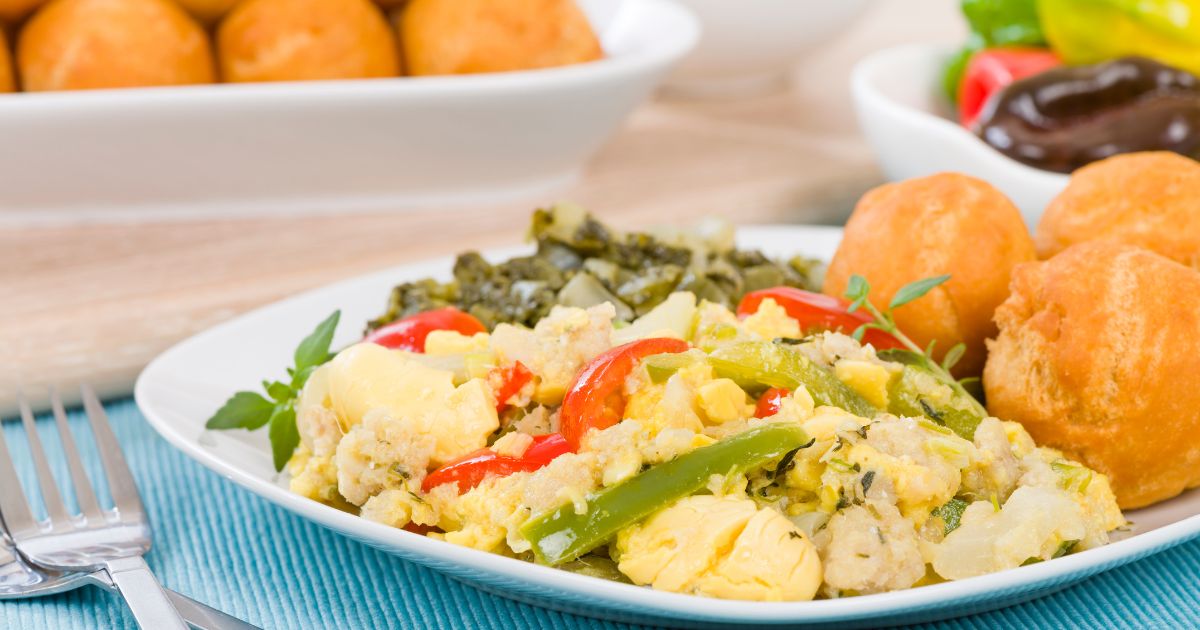
Ackee and Saltfish Fritters – Taste Of The Caribbean:
Ackee and saltfish is a classic Jamaican dish, and fritters are a creative way to enjoy its flavors. So to create savory fritters, chefs mix the ackee and saltfish mixture with a batter and deep-fry it.
Festival:
To make festivals, people prepare a sweet fried dumpling mixture from a blend of flour, cornmeal, sugar, and spices. They typically serve them as a side dish with various Caribbean dishes, especially fried fish.
Tostones:
Tostones, a beloved snack, are crafted from green plantains. The process involves slicing plantains into rounds, frying them until slightly golden, flattening them, and then frying them again until achieving a crispy texture. Also they are frequently served with dipping sauces like garlic sauce or salsa.
Bake and Shark:
A popular Trinidadian street food, bake and shark features fried bread (bake) filled with crispy shark meat. So typically, people garnish it with various toppings, including lettuce, tomatoes, cucumbers, and a range of sauces.
Saltfish Buljol – Taste Of The Caribbean:
Saltfish buljol is a mixture of salted codfish, tomatoes, peppers, onions, and spices. While it can be served as a salad, it also delights the taste buds when wrapped in dough and fried, resembling an empanada-like snack.
Jamaican Patties:
Jamaican patties are savory pastries filled with spiced meat (typically beef or chicken) or vegetables. Also they are renowned for their flaky, golden crust and spicy filling. So people commonly enjoy patties as a popular snack, often served with a side of cocoa bread.
Conch Fritters:
Chefs make conch fritters by mixing chopped conch meat with a batter of flour, spices, and sometimes vegetables. They then deep-fry them until they achieve a golden brown hue and serve them as a flavorful snack.
Read also Cape Town South Africa – Best places you need to visit
Fish Cakes:
Fish cakes are a common street food in Barbados and other Caribbean islands. So chefs create saltfish cakes by combining salted codfish with flour, spices, and herbs. They then shape the resulting mixture into small cakes, fry them until achieving a golden hue, and serve them piping hot.
Cassava Pone:
Caribbean chefs prepare cassava pone by combining grated cassava (yuca), coconut, spices, and sweeteners. They bake this mixture until it forms a golden crust on top, creating a crispy contrast to the soft interior.
Buñuelos:
Various Caribbean countries popularize buñuelos, deep-fried dough balls that people often fill with ingredients like cheese or beans, offering both sweet and savory flavors.
Breadfruit Chips – Taste Of The Caribbean:
Breadfruit, when sliced thinly, fried until crispy, and seasoned with salt and spices, makes for a delightful and addictive snack known as breadfruit chips.
Coco Bread:
While not fried itself, coco bread is often served alongside fried delights like patties or fried fish. This soft, slightly sweet bread is perfect for making sandwiches.
Fried delights are enjoyed at street food stalls, local markets, and gatherings throughout the Caribbean. Also they offer a wide range of flavors and textures, from crispy and savory to sweet and indulgent, making them an integral part of the region’s culinary landscape. Whether enjoyed as a quick snack or a side dish, these fried treats are a delicious way to explore the diverse flavors of Caribbean cuisine.
Desserts:
Caribbean desserts often feature tropical flavors and ingredients like coconut, pineapple, and rum. Popular desserts include coconut tarts, bread pudding, and rum cake.
Caribbean desserts are a delightful and indulgent part of the region’s cuisine, offering a wide range of sweet treats that showcase the rich and diverse flavors of the islands. Also these desserts often draw inspiration from the tropical fruits and spices that are abundant in the Caribbean. So here are more details about some of the popular Caribbean desserts:
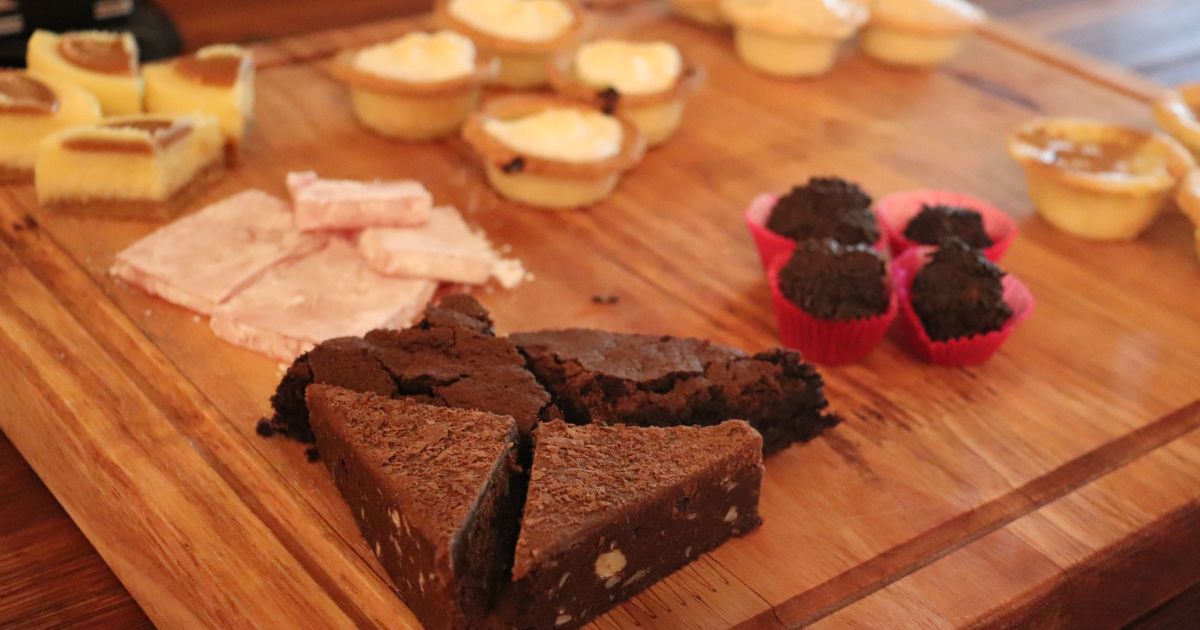
Coconut Tart:
Coconut tarts, a classic Caribbean dessert, feature a sweet coconut filling baked within a flaky pastry crust. So the filling is typically a mixture of grated coconut, sugar, spices like nutmeg and cinnamon, and sometimes eggs or milk for creaminess.
Rum Cake – Taste Of The Caribbean:
Rum cake, also known as “black cake,” is a moist and decadent dessert infused with rum. Makers use rich ingredients like dried fruits, nuts, and a generous amount of dark rum to craft it. Also the cake is soaked in rum after baking, imbuing it with a distinctive and intoxicating flavor.
Bread Pudding:
Bread pudding is a comforting dessert made from leftover bread, milk, eggs, sugar, and spices. In the Caribbean, people frequently enrich it with tropical ingredients like coconut milk and flavor it with spices such as cinnamon and nutmeg. Variations can include raisins, grated coconut, or local fruits.
Tamarind Balls:
Tamarind balls are a sweet and tangy treat made from tamarind pulp and sugar. So the tamarind pulp is rolle into small balls, coated in sugar or salt, and sometimes spiced with chili or pepper for a contrasting flavor.
Guava Duff:
The Bahamas originated the dessert known as guava duff, which is now enjoyed throughout the Caribbean. To make it, people wrap guava jam or puree in sweet dumpling dough and then boil or steam it until the dumplings cook and the guava filling becomes warm and gooey.
Sorbet – Taste Of The Caribbean:
Caribbean sorbets are often made from tropical fruits like mango, pineapple, and passion fruit. So they are refreshing and typically have a sweet and slightly tangy flavor. Some sorbets may also include a splash of rum or lime juice for added zing.
Cassava Pone:
Cassava pone is a sweet and dense dessert made from grated cassava (yuca), coconut, sugar, and spices like nutmeg and cinnamon. Typically, it’s baked until it forms a golden-brown crust on top.
Guanábana Ice Cream:
Guanábana, also known as soursop, serves as a tropical fruit used to craft a creamy and luscious ice cream, highly sought after in the Caribbean due to its sweet, slightly tangy, and unique flavor.
Papaya in Syrup:
People cook papaya slices in a sweet syrup made from sugar, spices, and sometimes rum. This dessert is a favorite, enjoyed both on its own and as a topping for ice cream or cake.
Pineapple Upside-Down Cake:
This classic dessert features pineapple slices and cherries arranged on the bottom of a cake pan, covered with a sweet batter, and baked. But after baking, people flip the cake over, positioning the fruit on top to create a caramelized and fruity topping.
Jamaican Sweet Potato Pudding:
Made with grated sweet potatoes, coconut milk, spices, and sweeteners like brown sugar or molasses, this pudding is dense, moist, and flavorful. So traditionally, people bake it over an open flame to infuse a smoky aroma.
Sugar Cakes – Taste Of The Caribbean:
Sugar cakes are small, sweet confections made from ingredients like grated coconut, sugar, and sometimes spices. People often form them into small patties or balls.
Caribbean desserts are a celebration of the region’s tropical fruits, rich spices, and cultural diversity. Also people often relish these condiments at special occasions, family gatherings, and festivals, savoring a sweet conclusion to a meal and experiencing a delightful taste of the Caribbean’s culinary heritage.
Sauces and Marinades:
Many Caribbean dishes are marinated or served with sauces that pack a punch. Jerk sauce, made with Scotch bonnet peppers and spices, is one of the most famous.
Sauces and marinades play a crucial role in Caribbean cuisine, adding layers of flavor, spice, and depth to various dishes. So these condiments are frequently concocted using a combination of locally available ingredients, which may include tropical fruits, herbs, spices, and peppers. Also here are more details about some of the popular sauces and marinades in Caribbean cuisine:
Sofrito:
Sofrito is a flavorful base used in many Caribbean dishes. So it typically consists of sautéed onions, garlic, bell peppers, and sometimes tomatoes. Also Caribbean sofrito is distinct from its Latin American counterparts and often includes unique ingredients like cilantro and culantro (a tropical herb with a similar flavor to cilantro).
Hot Pepper Sauce – Taste Of The Caribbean:
In Caribbean cuisine, a penchant for heat is well-known, and hot pepper sauces serve as a common method to introduce spiciness to dishes. Also fiery hot sauces are frequently crafted using ingredients like Scotch bonnet peppers, habaneros, and other chili peppers. So popular Caribbean hot sauces include Scotch bonnet pepper sauce and pepper jelly.
Mango Chutney:
Mango chutney is a sweet and tangy condiment made from ripe mangoes, sugar, vinegar, and spices. So it’s a versatile accompaniment that pairs well with grilled meats, seafood, and curry dishes.
Tamarind Sauce:
People make tamarind sauce from tamarind pulp, sugar, and spices. It has a sweet and tangy flavor that complements many Caribbean dishes, particularly fried delights and grilled meats.
Jerk Sauce/Marinade:
The quintessential Caribbean flavor profile known as marinade or jerk is characterized by a blend of allspice, Scotch bonnet peppers, thyme, garlic, and other spices. People use jerk sauce or marinade to season and marinate meats (such as chicken, pork, or fish) before grilling or roasting.
Pineapple Salsa:
Pineapple salsa combines diced pineapple with onions, peppers, cilantro, lime juice, and spices. It adds a refreshing and slightly sweet contrast to grilled seafood and meats.
Curry Sauce – Taste Of The Caribbean:
Caribbean curry sauces are rich and flavorful, often featuring a blend of spices like turmeric, coriander, cumin, and cayenne pepper. So these sauces are employed in various curries, including goat curry, chicken curry, and vegetable curry.
Mamajuana Marinade:
Mamajuana is a traditional Dominican alcoholic beverage, and it’s also utilized as a marinade for meats and seafood. But it includes a mix of herbs, honey, and spices soaked in rum, wine, and honey.
Green Seasoning:
Green seasoning is a vibrant herb and spice blend used as a marinade for meats and fish. It typically includes ingredients like cilantro, scallions, garlic, thyme, and hot peppers. So it’s versatile and adds a burst of flavor to various dishes.
Fish Sauce:
Caribbean fish sauces are commonly employed as a dipping sauce for fried fish. So these sauces can vary from island to island and may include ingredients like lime juice, vinegar, onions, and Scotch bonnet peppers.
Sauce Ti-Malice – Taste Of The Caribbean:
This Haitian sauce is a savory and spicy condiment made with onions, peppers, vinegar, and sometimes tomatoes. It is frequently paired with grilled meats or fried fish.
Coconut Sauce:
Coconut milk serves as a common ingredient in Caribbean cooking, enabling the creation of creamy and rich sauces for seafood, vegetables, and curry dishes. It adds a delightful tropical flavor.
Sauces and marinades are an essential part of Caribbean cuisine, contributing to the vibrant and diverse flavors that make the region’s dishes so distinctive and memorable. Also these flavorful condiments allow for endless creativity in the kitchen, and their use reflects the cultural richness and culinary traditions of the Caribbean islands.
Beverages:
Besides rum-based cocktails, the Caribbean is celebrated for its refreshing fruit juices and beverages. These include sorrel (hibiscus flower drink), mauby (a bitter-sweet bark-based drink), and fresh coconut water.
Beverages are an integral part of Caribbean cuisine, reflecting the region’s tropical climate and rich cultural heritage. So Caribbean beverages are renowned for their refreshing and diverse flavors, frequently showcasing tropical fruits, spices, and rum. Also here are more details about some of the popular beverages in Caribbean cuisine:
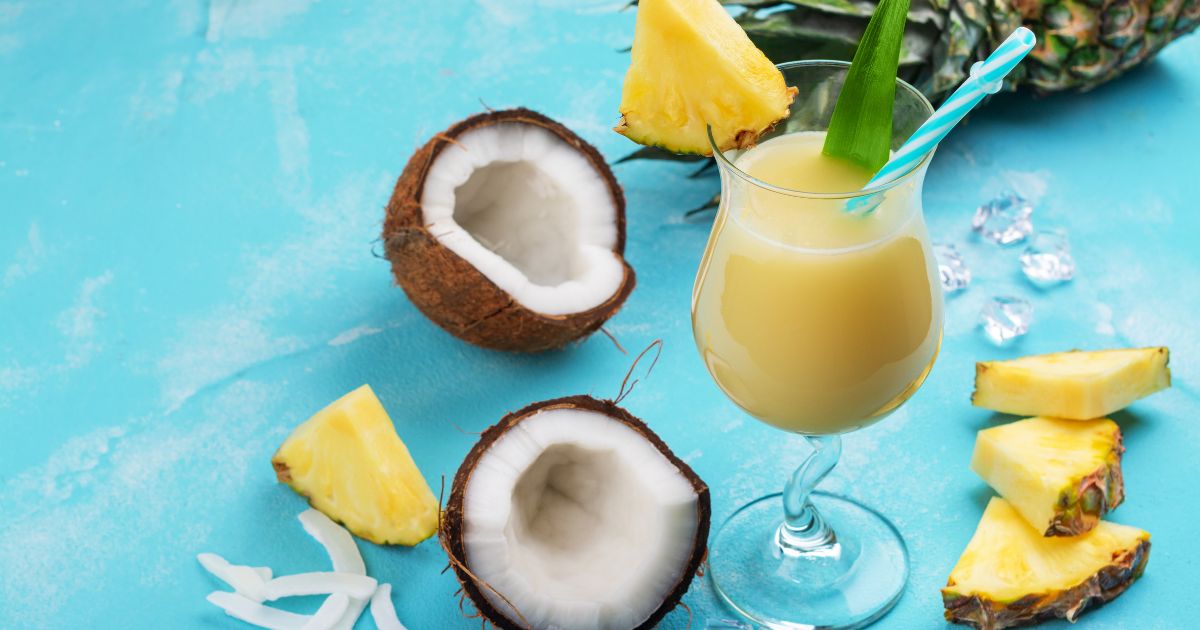
Coconut Water:
Coconut water is the clear, refreshing liquid found inside young green coconuts. In the Caribbean, people enjoy a natural electrolyte-rich drink fresh from the coconut, often referring to it as “nature’s sports drink” because of its rehydrating properties.
Rum Punch:
Also the classic Caribbean cocktail, known as rum punch, involves crafting a mixture by combining rum, a blend of fruit juices (typically including orange, pineapple, and lime juices), sugar or syrup, and adding a hint of nutmeg or bitters for flavor. The proportions of these ingredients can vary, but the result is a fruity and potent drink.
Sorrel – Taste Of The Caribbean:
People in the Caribbean prepare sorrel, a popular drink, by using dried hibiscus flowers, often infusing them with spices like cloves and cinnamon. Also they sweeten it with sugar or honey and serve it chilled. So sorrel is a traditional Christmas drink in many Caribbean countries.
Mauby:
People make Mauby, a traditional Caribbean drink, from the bark of the mauby tree, steeping it with spices like cinnamon and cloves. Also it boasts a bittersweet flavor and is frequently sweetened with sugar or honey. Mauby is a beloved beverage in the region.
Ting:
In the Caribbean, Ting, a popular carbonated grapefruit soda, offers a distinct citrus flavor and people often enjoy it on its own or mix it with rum.
Guava Juice – Taste Of The Caribbean:
Guava juice is created from ripe guava fruit, and it’s renowned for its sweet and tropical flavor. So it’s a popular breakfast drink in many Caribbean countries.
Pineapple Juice:
Freshly squeezed pineapple juice is a common and refreshing beverage in the Caribbean. It’s frequently served either on its own or mixed with other tropical fruit juices.
Carrot Juice:
To create a sweet and creamy beverage known as “carrot punch” or “Caribbean carrot juice,” people blend carrot juice with other ingredients such as condensed milk, nutmeg, and vanilla.
Ginger Beer:
Caribbean ginger beer is a non-alcoholic, carbonated beverage with a spicy ginger flavor. Also people favor it for its bold taste and often enjoy it as a refreshing drink or mix it with rum.
Cocoa Tea:
Cocoa tea consists of grated cocoa beans, spices like nutmeg and cinnamon, and milk or coconut milk to create a hot beverage. So it’s a comforting and slightly spicy drink enjoyed throughout the Caribbean.
Papaya Smoothie – Taste Of The Caribbean:
People make papaya smoothies by blending ripe papaya, milk or yogurt, and a touch of sweetener to create a creamy and tropical beverage.
Mango Lassi – Taste Of The Caribbean:
Mango lassi is a drink of Indian origin but is popular in Caribbean cuisine as well. So it combines ripe mango, yogurt, sugar, and sometimes a pinch of cardamom for a sweet and creamy treat.
Peardrax:
Peardrax is a fizzy, non-alcoholic carbonated drink with a distinctive pear flavor. Also many Caribbean countries enjoy it as a refreshing beverage.
Jamaican Irish Moss – Taste Of The Caribbean:
Irish moss is a thick, creamy drink made from seaweed, condensed milk, and spices like vanilla and nutmeg. So its alleged aphrodisiac properties have made it a popular traditional drink in Jamaica.
Sea Moss Drink:
People use sea moss, also known as Irish moss, to create a healthful and nutritious beverage by blending it with milk, spices, and sweeteners for added flavor.
Caribbean beverages not only quench thirst but also provide a taste of the region’s vibrant culture and culinary traditions. Whether enjoyed as a refreshing juice, a spicy ginger beer, or a spirited rum punch, these drinks are an essential part of the Caribbean dining experience.
Conclusion
In conclusion, Caribbean cuisine is a beautiful tapestry of flavors, colors, and aromas that evoke a sense of joy and celebration. So each dish tells a story of the Caribbean’s rich heritage, from the indigenous ingredients to the influences of African, European, and Asian culinary traditions.
As you explore Caribbean cuisine, you embark on a journey of sensory delight. Whether it’s the fiery heat of Scotch bonnet peppers, the sweetness of ripe mangoes, or the comforting embrace of a warm bowl of soup, every bite and sip carries with it a piece of the Caribbean’s heart and soul.
So, let your taste buds dance to the melodies of Caribbean flavors, let your senses be tantalized by the spices and seasonings, and let your heart be warmed by the stories that each dish tells. But Caribbean cuisine is not just a meal; it’s an experience, a celebration, and a journey of the soul.
In the world of culinary delights, Caribbean cuisine stands as a testament to the beauty of diversity, the joy of discovery, and the magic of sharing a meal with loved ones. Also it’s an invitation to savor life’s simple pleasures and to embrace the richness of a culture that knows how to enjoy every bite and sip with passion and gratitude. So, raise your glass of rum punch, savor the sweetness of a coconut tart, and let the flavors of the Caribbean transport you to a place where every meal is a celebration of life itself.




Thank you for writing this post!
[…] also – Taste Of The Caribbean – Flavorful Journey Through […]
You’re so capable!
[…] also – Taste Of The Caribbean – Flavorful Journey Through […]
[…] also – Taste Of The Caribbean – Flavorful Journey Through […]
[…] also – Taste Of The Caribbean – Flavorful Journey Through […]